-contributed by Rhonda Rinehart.
When “Psychic Killer” was released in 1975, there wasn’t much on the surface to set it apart from other horror movies of the same ilk. There was violence. There was gore. There was sex. There were victims. “He freed his mind and body to commit the most sensual and shocking acts imaginable!” promised the movie poster.
Such claims probably don’t mean all that much in the 40-something rearview mirror of Leatherface and Michael Myers but one thing did set “Psychic Killer” apart from other movies and that was The Kirlian Effect. Based on a 1939 concept developed by Russian inventor Semyon Kirlian that all living things project an energy field, and these energy fields can be photographed, The Kirlian Effect received some attention; at best as a sort of pseudo-psychology and at worst as a complete myth. The technique developed to capture these energy fields came to be known as Corona Discharge Photography, so named for the electrical discharge brought about by connecting an object to both a photographic plate and a high-voltage electrical source, and snapping a picture of the resulting electro-discharge. And so Kirlian Photography, as it is also known, was born – and “Psychic Killer” was created in its wake.
Though the movie didn’t quite get it right – turns out the protagonist was astral projecting (a story for another blog) rather than discharging any coronal impulses – Kirlian Photography was indeed the muse for the film’s screenwriter and producer, Mardi Rustam, and, surprisingly, for a handful of psychologists in the ‘70s and ‘80s.
One of those psychologists, Willard Caldwell, was hanging out in a cute little cottage named Kipling Arms, tinkering with his own coronal discharge equipment around the same time that Rustam was conceiving his psychic killer. While photographing electromagnetic discharges or “auras” of everything from lizards and grasshoppers to vials of his own blood, Caldwell wasn’t just playing a 1970s version of Dr. Frankenstein.
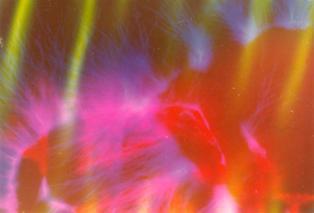
Vial of Willard Caldwell blood.
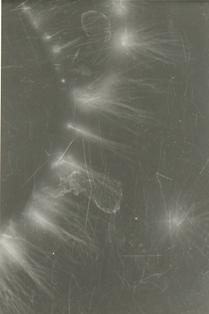
Willard Caldwell’s left and right frontal lobes.
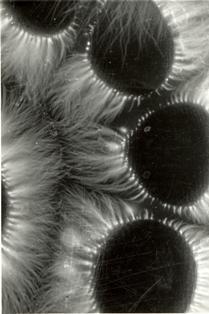
Willard Caldwell’s hands.
Rather, Caldwell was developing techniques that would come to focus on the effects of magnetic fields upon behavior, schizophrenia, and neuropsychology. Caldwell worked to incorporate the neuroscience of brain damage and schizophrenia through the use of Kirlian photography into a more serious application, though he did take time to further develop Kirlian photographic techniques for other living things.
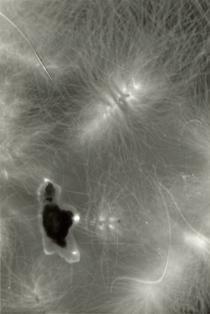
Coronal discharge from a grasshopper.
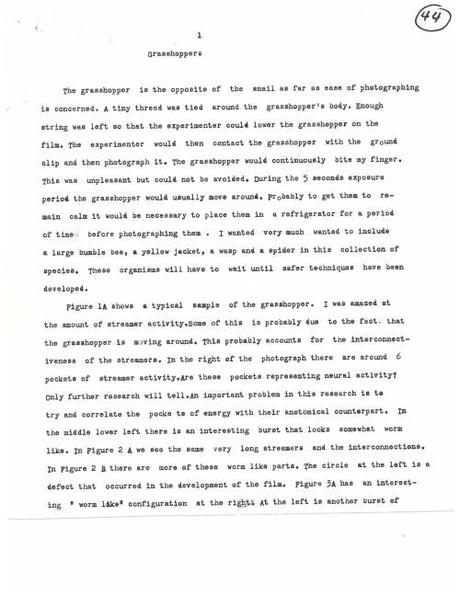
Caldwell’s notes on handling the grasshopper during photography.
" data-orig-size="2550,3300" sizes="(max-width: 500px) 100vw, 500px" data-image-title="grasshopper2" data-orig-file="https://centerhistorypsychology.files.wordpress.com/2017/10/grasshopper2.jpg" data-image-meta="{"aperture":"0","credit":"","camera":"","caption":"","created_timestamp":"0","copyright":"","focal_length":"0","iso":"0","shutter_speed":"0","title":"","orientation":"0"}" width="500" data-medium-file="https://centerhistorypsychology.files.wordpress.com/2017/10/grasshopper2.jpg?w=232" data-permalink="https://centerhistorypsychology.wordpress.com/2017/10/31/blood-brains-and-fingertips-three-guys-and-an-aura/grasshopper2/" alt="" height="647" srcset="https://centerhistorypsychology.files.wordpress.com/2017/10/grasshopper2.jpg?w=500&h;=647 500w, https://centerhistorypsychology.files.wordpress.com/2017/10/grasshopper2.jpg?w=1000&h;=1294 1000w, https://centerhistorypsychology.files.wordpress.com/2017/10/grasshopper2.jpg?w=116&h;=150 116w, https://centerhistorypsychology.files.wordpress.com/2017/10/grasshopper2.jpg?w=232&h;=300 232w, https://centerhistorypsychology.files.wordpress.com/2017/10/grasshopper2.jpg?w=768&h;=994 768w, https://centerhistorypsychology.files.wordpress.com/2017/10/grasshopper2.jpg?w=791&h;=1024 791w" class="wp-image-3792 size-large" data-large-file="https://centerhistorypsychology.files.wordpress.com/2017/10/grasshopper2.jpg?w=500&h;=647" />Caldwell’s notes on handling the grasshopper during photography
Biting grasshoppers aside, the applications of Caldwell’s techniques were reported by him in numerous research papers on topics as diverse as cancer and Sudden Infant Death Syndrome. Though mostly unpublished, Caldwell’s prolific research did get some academic attention, but Kirlian photography remains an outlier in health and psychological research.
But perhaps Kirlian, Caldwell and Rustam were on to something. The brain, as we know, is a powerful tool. It stands to reason that we would want to know more about how it works and how it relates to our being. How we get there is up to us. We can make movies or we can do research. Either way, the result is only part of the journey.
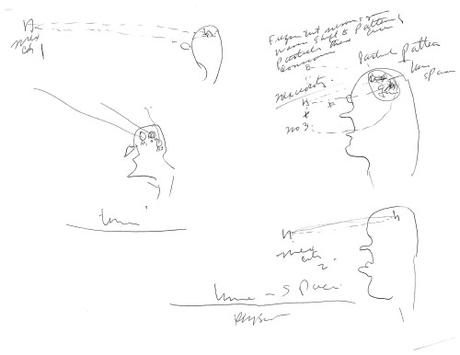
Sketch of Kirlian photographic techniques, by Caldwell.
The Willard Caldwell papers are located at the Cummings Center for the History of Psychology at the University of Akron. View the collection finding aid here: http://rave.ohiolink.edu/archives/ead/OhAkAHA0036.
Photographic equipment Caldwell used in his experimentation is also located at the Cummings Center: http://cdm15960.contentdm.oclc.org/cdm/singleitem/collection/p15960coll7/id/1713/rec/1
